Key in a search term below to search our website.
Key in a search term below to search our website.
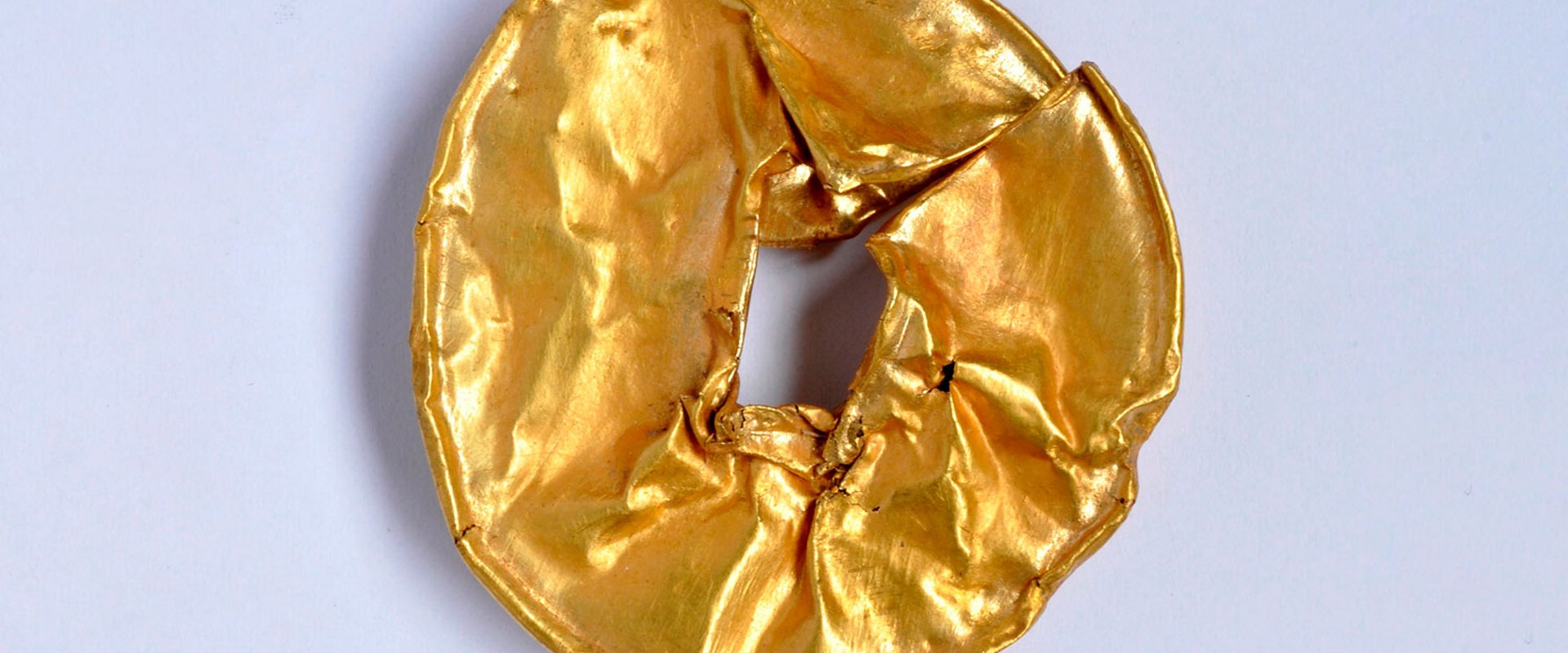
Many of the objects we’ve presented so far have been single finds or small groups of objects. But this week we want to show that gold was also something to hoarded, sometimes in great numbers. A perfect example with a fascinating story to tell is the group of rings and bracelets from Cae Capel Eithin (otherwise known as ‘Gaerwen’), in Anglesey, Wales.
This hoard of eleven small gold rings and eleven gold bracelets was found in 1856. These date to the Late Bronze Age (1150-800 BC). Unfortunately most of these were sold to a silversmith and melted down. Only two rings and two bracelets now survive in the collections of the British Museum (BM reg. nos WG.15-18).
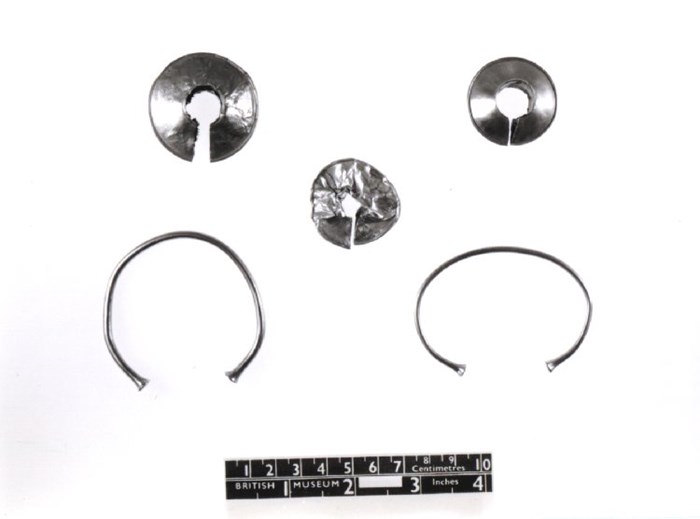
The surviving pieces of the Cae Capel Eithin hoard, BM WG.15-18. © The Trustees of the British Museum.
The exact location where the hoard was found remained a mystery until 1980, when archaeologists were excavating an Early Bronze Age cemetery at Cae Capel Eithin. Excavators were removing plough soil just to the west of the cemetery when they found a crushed gold ring almost identical to the two surviving examples from Gaerwen.
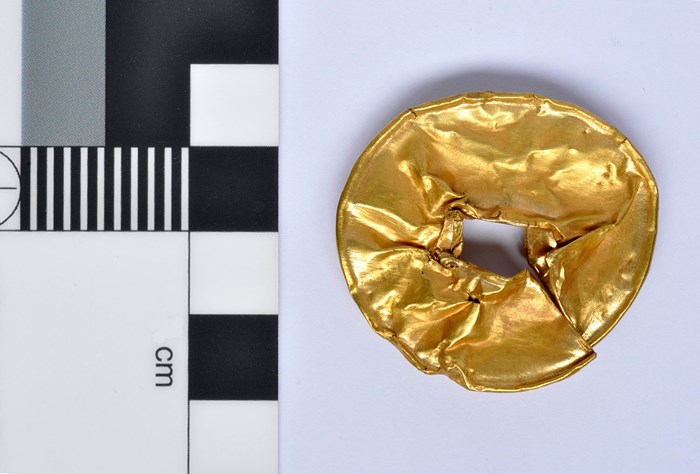
The crushed Cae Capel Eithin gold ring. Photo: Ian Jones, Oriel Môn.
This ring is 38mm at its maximum diameter and weighs just 3.5g! It was found close to an Early Bronze Age burial cairn and near a modern shallow disturbance in the soil. It seems likely that this was the original location of the hoard, and the crushed ring was missed and perhaps trampled during excavation in 1856. This brings the total of known rings to twelve alongside the eleven bracelets. Could we be missing a twelfth bracelet?
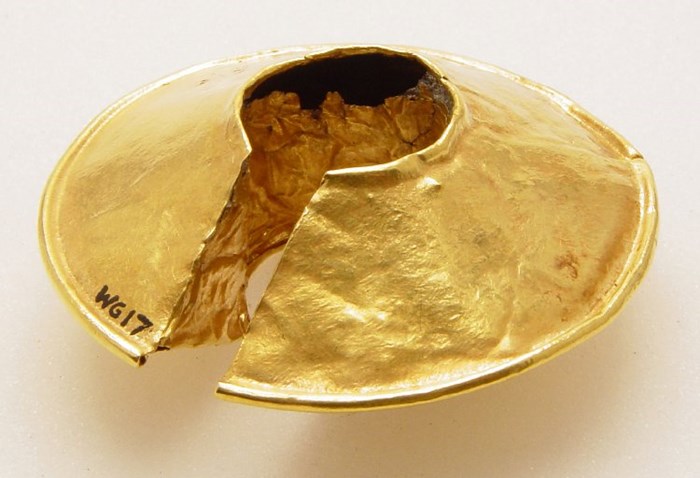
One of the surviving lock-rings from Gaerwen, currently at the British Museum. © The Trustees of the British Museum.
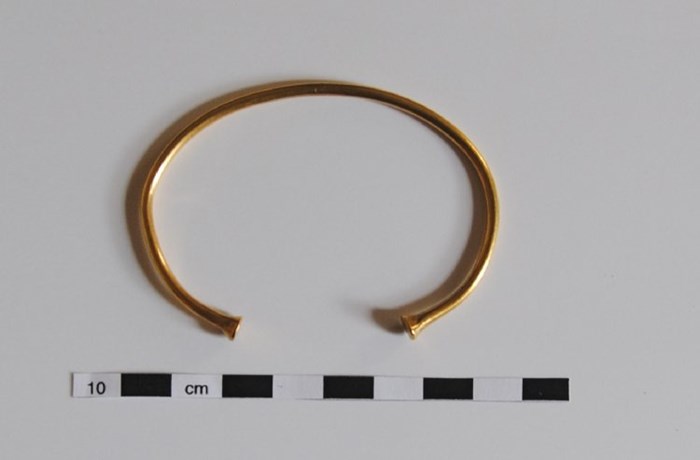
One of the surviving bracelets from Gaerwen, currently at the British Museum. © The Trustees of the British Museum.
The stone cairn was built over a thousand years before the hoard was deposited but it may have acted as a marker for where the hoard was buried. After all, if you’re going to bury gold you want to know where you put it! A cemetery of at least 17 Early Bronze Age burial pits was also located near the cairn and this may have overall been an important place in prehistory.
But who was burying these gold objects? And why?
We know gold objects were very important to prehistoric communities, and it certainly seems that this was a group effort depositing shared wealth; eleven bracelets and twelve rings is otherwise a lot of bling for one person!
The rings are of a specific form with a hollow, triangular section and are known as “lock-rings”. These occur around the same time as other penannular rings, such as the one from Cladh Hallan, and are commonly produced in Ireland in the Late Bronze Age.
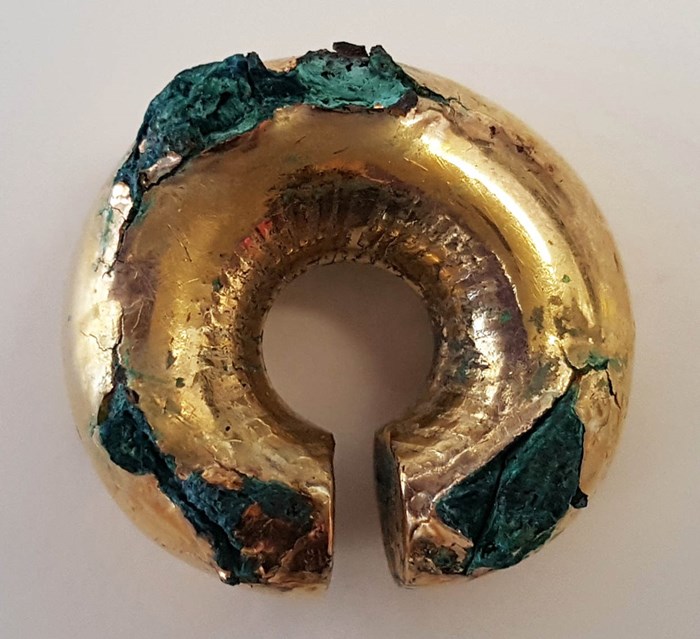
The Cladh Hallan gold ring.
Likewise, the Gaerwen bracelets are an Irish style. So are we looking at the hoard of a traveller or travellers, perhaps carrying Irish objects to new places? Ireland has a large supply of gold that was exploited for producing objects so this is quite possible.
We have shown previously that there were links between Scotland and Ireland at this time with the Skye cup-ended ornament, but the same was true of Ireland and Wales. Anglesey in particular seems to have been a frequently visited location where gold was buried. Two Irish-style bracelets were also found at Beaumaris on Anglesey, and most recently a hoard including three copper ingot fragments and a gold ring was found at Cwm Cadnant. Anglesey’s proximity to Ireland can hardly be a coincidence.
These various discoveries challenge us to think about how people and the gold they treasured moved around different places. They highlight that this was a period of mobility and cultural interactions. Gold undoubtedly had an important part to play in this.
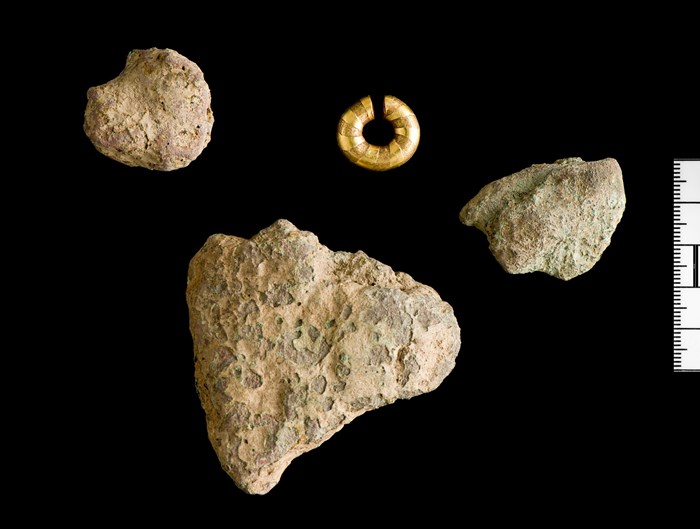
The Cwm Cadnant hoard, Anglesey. © Amgueddfa Cymru – National Museum Wales.
The Cae Capel Eithin lock-ring found in 1980 is on display at Oriel Môn in Anglesey. Visitors can also see the gold ring and ingot fragments from Cwm Cadnant.
Thanks to Ian Jones for providing information and photos of the Cae Capel Eithin lock-ring.
 By Matthew Knight, Curator of Chalcolithic and Bronze Age Prehistory
By Matthew Knight, Curator of Chalcolithic and Bronze Age Prehistory